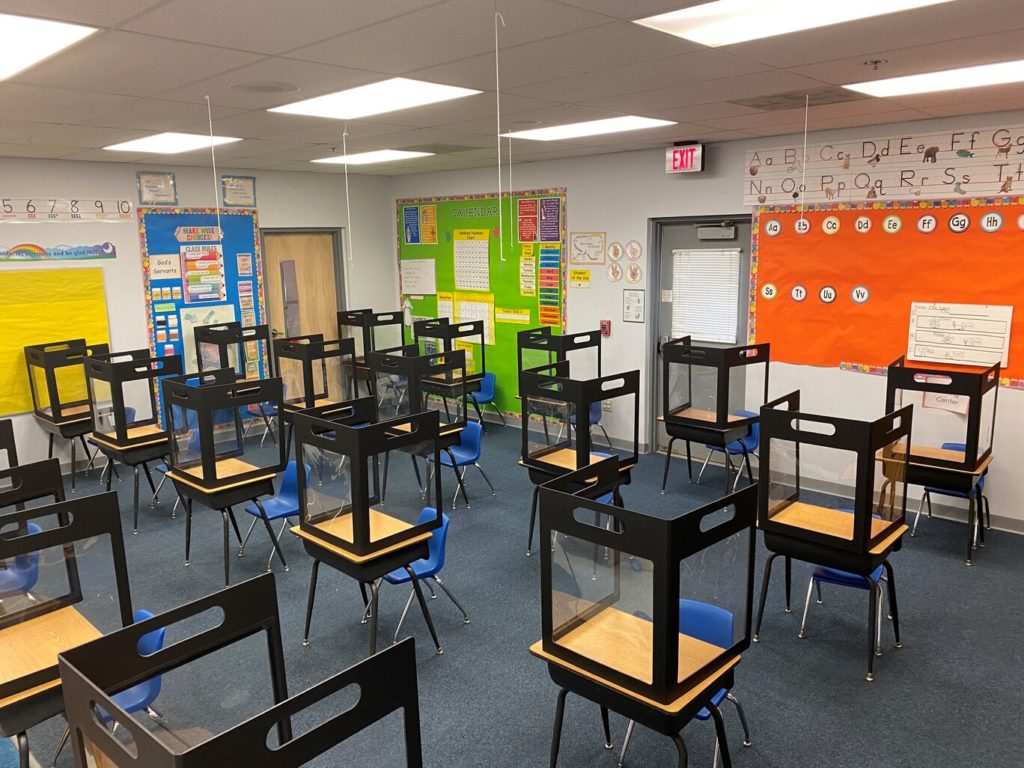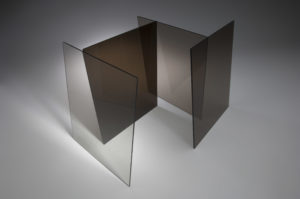When it comes to Sneeze Guards for schools, do they make educational facilities safer? Currently, many schools around the country are considering the best and safest methods for reopening in the fall. The COVID-19 pandemic forced facilities in several states to close toward the end of the last school year. And many of the same health and safety risks still exist today.
So for those districts that are working on creating reopening plans, extra safety precautions are likely necessary. In addition to steps like providing face masks, implementing social distancing policies, and sanitizing surfaces regularly, sneeze guards may be helpful in stopping or slowing the spread of coronavirus around schools.
If you’re looking for ways to improve safety and sanitation around educational facilities, here are some of the most important things to know about sneeze guards for schools.

How Polymershapes Is A Premier Supplier of Sneezeguards
Sneeze guards have been gaining a lot of attention in recent months due to the COVID-19 pandemic. They’ve been installed in grocery stores, carryout restaurants, banks, retail stores, and customer service counters. Basically, these structures are made using clear, thin-gauge plastic that provides a simple barrier between individuals.
These plastic sneeze guards are durable and impact resistant, so they can be used in a variety of environments and provide a safe and sturdy barrier. However, they’re also clear and thin, which allows for easy communication between both sides. This is perfect for schools, because it allows students to clearly see and hear their instructions and interact with other students without having to come into direct contact with everyone in the classroom.
Polymershapes is a plastic fabrication company that has been at the forefront of sneeze guard production since the onset of the pandemic. Our products come in standard sizes, or can be made custom to each facility’s exact size and shape needs. They also come in several different installation options — you can hang them from above, place freestanding units on desks them on a countertop, or install them using brackets or double-sided tapescrews. These options have allowed businesses and organizations to quickly provide protection for essential workers and create safer environments for customers and visitors as well. Now, with more non-essential businesses and facilities like schools opening gradually, it’s the perfect time to consider adding custom sneeze guards or ready-made barriers in those buildings too.
How Some Schools Are Implementing Sneeze Guard Protection
Some school districts around the country are already hard at work making and installing sneeze guards around their facilities. For example, schools in Jefferson County, Alabama are currently working on installing sneeze guards in their front offices. St. Mary’s School in Eastern Iowa is installing sneeze guards around desks. And Wisconsin recently approved the use of sneeze guards in busses.
Schools can utilize sneeze guards in several different ways. First, many are adding them over desks and workstations where office and support staff spend their days. This can help to protect administrators and others in the building who may be at higher risk than the average student. Some may use them around entrances, especially if temperature checks or sanitation must be completed before allowing entry. And school busses and other types of transportation can also use them to provide extra separation between individuals.
However, even young, healthy students may be at risk of carrying the virus and other germs if they’re exposed, which could put parents and others who they come into contact with at risk. And even though students may have good intentions, they may not always remember to practice proper distancing and sanitizing procedures, especially if they’re very young. So some schools may also benefit from installing sneeze guards or plastic barriers around student desks, cafeteria tables, or other workstations around the school.
Do Sneezeguards Make Schools Safer?
If you’re wondering exactly how sneeze guards for schools actually improve safety conditions, the idea is fairly simple. If an infected person coughs or sneezes from behind a piece of thin plastic, the particles that carry the virus should only travel that far. They won’t easily make it through to the other side where another individual may be standing or sitting. And if the barriers are sanitized regularly and other common sense safety procedures are followed, this could make everyone in the facility safer and healthier.
It’s important to note that no safety measure can completely eliminate the chance of the virus or other germs spreading. However, physical barriers can greatly reduce the chance of those particles going directly from person to person, which is how scientists believe the majority of COVID-19 and other infectious diseases are spread. So when combined with physical distancing, face masks, hand washing and sanitizing, sneeze guards for schools have the potential to make a major impact on school safety.
If you’re ready to discuss a sneeze guard for schools strategy for your educational facility, Polymershapes can help. We’ve been a leader in the industry’s coronavirus response from the beginning, providing sneeze guards, face shields, and social distancing signage for essential businesses around the country. In addition to these quality safety solutions, we also provide a huge selection of high performance plastics like polycarbonate, acrylic, HDPE, ABS, nylon, and vinyl for clients in various industries. Our distribution centers are conveniently located across the United States, so clients have access to personalized service, quick project quotes, and an easy shipping process. Those same local facilities are also outfitted with industry leading equipment to ensure that all of our customers receive items that meet their exact specifications. If you’re ready to improve safety at your facility with sneeze guards for schools, contact your local Polymershapes branch today to get started.
